
Concept explainers
To write: A polynomial function f of least degree that has rational coefficients, a leading coefficient of 1 and the given zeros.
The required polynomial function f would be f(x)=x3−6x2+5x+12 .
Given information:
Zeros of a function: −1, 3, 4 .
Formula used:
If x=a, b, c are zeros of the function f(x) , then (x−a), (x−b) and (x−c) would be factors of the function.
Calculation:
For the given problem, there are 3 zeros. This means there will be 3 factors of the given function as:
f(x)=(x−(−1))(x−3)(x−4)=(x+1)(x−3)(x−4)
Now expand the factors using the distributive property (a+b)(c+d)=a⋅c+a⋅d+b⋅c+b⋅d:
f(x)=(x+1)(x−3)(x−4)=(x(x−3)+1(x−3))(x−4)=(x2−3x+x−3)(x−4)=(x2−2x−3)(x−4)=x(x2−2x−3)−4(x2−2x−3)=x3−2x2−3x−4x2+8x+12=x3−6x2+5x+12
Therefore, the required function would be f(x)=x3−6x2+5x+12 .
Chapter 2 Solutions
Algebra 2: New York Edition (holt Mcdougal Larson Algebra 2)
- 22.) Mr. Vedrani has a pool with a deck built around it. The equation (2x+14)(2x+19) = 650 represents the relationship of the side lengths (in feet) of the entire pool area (in square feet). a.) If 350 represents the area of the pool and deck area, what do the expressions (2x+14) and (2x+19) each represent? b.) Using graphing technology, find x, the width of the deck around the pool. If necessary, round to the nearest tenth. x=arrow_forwardHow do I get common factors?arrow_forwardProblem #1 You apply to two different graduate programs at a specific university: one in geology and one in environmental sciences. Let P(G) = 0.8, where P(G) represents the probability that you get accepted into the geology program. Let P(E) = 0.72, where P(E) represents the probability that you get accepted into the environmental sciences program. Let P(GE) = 0.65. a). Create a Venn diagram that represents this information. b). First, calculate P(GUE). Then, using complete sentence, interpret what P(GUE) represents in the context of this problem.arrow_forward
- Problem #3 Let P(G|Q) = 0.03, P(G) = 0.2, and P(Q) = 0.5. a). Find P(GnQ). b). Find P(G UQ). c). Are events G and Q independent or dependent? Explain your reasoning.arrow_forwardProblem #4 Suppose a random variable, X, has the following probability distribution table. X 1 2 3 4 5 60 P(X=x) 0.29 0.11 0.32 0.18 a). Find P(X = 5). b). Find P(2≤ X ≤4). c). Find P(2arrow_forwardProblem #5 You play a game where you have a 35% chance of winning and a 65% chance of losing (no ties are permitted). If you play the game multiple times in a row, the probability of winning and losing remains the same for each attempt. a). If you play the game 40 times, what is the probability that you lose all of the 40 games? b). If you play the game 40 times, what is the probability that you win exactly 25 times?arrow_forward
- 4. (18 pts) Suppose that A is a 3×3 matrix with eigenvalues 2₁ = 0, λ₂ = −1 and 23 = 1, and corresponding eigenvectors V₁ = 0 [] ΓΟΤ (1₁ = 0), V2 = (₁₁ = -1), V3 = (λ3 = 1). 12. (1) Find the matrix A. (2) Find A20 d Y(t) (3) Find the unique solution of the differential equation =AY(t), t≥ 0 dt with the initial condition Y(0) =arrow_forward[1 3 1] 2. (16 pts) Consider a matrix A = 273, determine [26 2 (1) The basis set for the column space of A. (2) The basis set for the row space of A. (3) The range space of A. (4) The basis set for the null space of A.arrow_forwardBrandon is an amateur marksman. When he takes aim at a particular target on the shooting range, there is a .1 probability that he will hit it. One day, Brandon decides to attempt to hit 10 such targets in a row. Assuming that Brandon is equally likely to hit each of the 10 targets, what is the probability that he will hit at least one of them?Round your answer to the nearest hundredth.arrow_forward
- When Hugo is serving at a restaurant, there is a .03 probability that each party will request a high chair for a young child. During one hour, Hugo served 10 parties. Assuming that each party is equally likely to request a high chair, what is the probability that at least one party will request a high chair?Round your answer to the nearest hundredth.arrow_forwardWhen Hiroto is writing, there is \[0.92\]probability that there will be no spelling mistakes on a page. One day, Hiroto writes an essay that is \[11\] pages long. Assuming that Hiroto is equally likely to have a spelling mistake on each of the \[11\] pages, what is the probability that he will have a spelling mistake on at least one of the pages?Round your answer to the nearest tenth.arrow_forwardWhen a customer places an order at Derin's bakery, there is an 85% probability that the order will include some kind of dessert. One day, 7 customers place orders at Derin's bakery. Assuming that each order is equally likely to include dessert, what is the probability that at least one order will not include dessert? Round your answer to the nearest hundredth. P(at least one without dessert) =arrow_forward
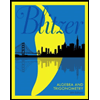 Algebra and Trigonometry (6th Edition)AlgebraISBN:9780134463216Author:Robert F. BlitzerPublisher:PEARSON
Algebra and Trigonometry (6th Edition)AlgebraISBN:9780134463216Author:Robert F. BlitzerPublisher:PEARSON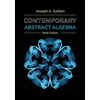 Contemporary Abstract AlgebraAlgebraISBN:9781305657960Author:Joseph GallianPublisher:Cengage Learning
Contemporary Abstract AlgebraAlgebraISBN:9781305657960Author:Joseph GallianPublisher:Cengage Learning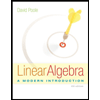 Linear Algebra: A Modern IntroductionAlgebraISBN:9781285463247Author:David PoolePublisher:Cengage Learning
Linear Algebra: A Modern IntroductionAlgebraISBN:9781285463247Author:David PoolePublisher:Cengage Learning Algebra And Trigonometry (11th Edition)AlgebraISBN:9780135163078Author:Michael SullivanPublisher:PEARSON
Algebra And Trigonometry (11th Edition)AlgebraISBN:9780135163078Author:Michael SullivanPublisher:PEARSON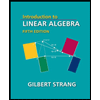 Introduction to Linear Algebra, Fifth EditionAlgebraISBN:9780980232776Author:Gilbert StrangPublisher:Wellesley-Cambridge Press
Introduction to Linear Algebra, Fifth EditionAlgebraISBN:9780980232776Author:Gilbert StrangPublisher:Wellesley-Cambridge Press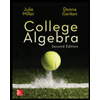 College Algebra (Collegiate Math)AlgebraISBN:9780077836344Author:Julie Miller, Donna GerkenPublisher:McGraw-Hill Education
College Algebra (Collegiate Math)AlgebraISBN:9780077836344Author:Julie Miller, Donna GerkenPublisher:McGraw-Hill Education





